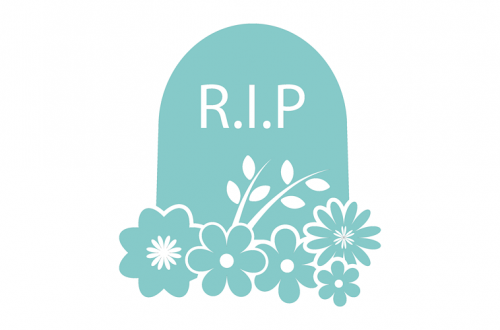how to accept the unacceptable …
The ideas for this post came from my ‘anaerobic threshold & ME …’ post. Which, I wrote because I wanted to learn about what my body could actually do without pushing myself into AT.
After some experiments and soul searching, I concluded that I couldn’t do much at all … and I got really stuck on how to accept this because it felt necessary but almost unacceptable at the same time.
I’m guessing that a lot of what I need to implement in relation to this acceptance stuff is probably interlinked and written about in my ‘mindfulness for ME …’ post, which I may repeat or refer to here. But I clearly need to learn this lesson or I wouldn’t still be pondering it all. I’d have it sussed and I haven’t.
It may also be that I need to use the skills that I previously talked about in my ‘mindfulness for ME …’ post in coming to terms with accepting where I am at right now.
That ascertained, this post will take you through the processes that I used as I try to accept the unacceptable …
I need, and want, to accept that I can’t do this …
and no amount of desire or wishing is going to change my reality …
I just can’t seem to get myself around this. I understand it. I actually, even, believe it. Yet, it somehow feels like I’m accepting, whatever this may be, that this is how it will be from now on and into forever. And that is not what I want. In spite of these desires, it has now become necessary for me to ‘accept my unacceptable’.
A Striking Paradox
However, there may be other ways for me to look at this. It may not be the case that accepting the unacceptable is all negative. It’s a conceivable paradox that sometimes we need to accept the unacceptable in order to achieve the things we want to.
Let me explain by way of an illustration.
Someone is struggling daily with pain. Because of this pain, they are not enjoying life. They, in fact, believe the way they are living is not life at all.
The simple remedy might be to take pain medication.
However, for them, it’s unacceptable to take pain medications. Firstly, because psychologically it feels like failure. Secondly, and more importantly, they have an allergy to codeine, the mostly widely used medicine for moderate to severe pain levels. This leaves them believing they are in a catch 22 situation.
This said, the pain is getting in the way of their living. It stops them from enjoying things. It stops them from smiling. It exhausts them even further.
If they could just get rid of their pain, or at the very least bring the pain down to a tolerable level, then they may be able to enjoy their life and their doing of things so much more. An added bonus would also mean that they could do things without using energy on dealing with pain, meaning they may even be able to do more.
And so, to get to this point they may need to let go of their idea that relying on pain medication is failure and also go through the process of finding a medication that they are not allergic to and works for them.
acceptance has led to improved life quality, which is what they were after in the beginning …
and non-acceptance was preventing them from achieving this …
Five Ways to Acceptance
There will be many ways to reach acceptance, some more result productive than others. And they will also be personal too, what works for one may not work for another.
In my endeavour to find acceptance I have chosen to discuss the five methods that helped get me on my way to acceptance.
#1: you are enough …
I think that one of the most important steps in acceptance, of anything, but especially a life you didn’t bargain for, is to know you are enough regardless.
Y O U A R E E N O U G H …
You don’t have to do anything to be enough. Just being alive makes you enough and worthy enough too.
According to Dr David Hamilton being enough is tied up with self love and I have to wholeheartedly agree with him on this. In one of his articles he claims there are[sg_popup id=”4863″ event=”inherit”]three stages to self-love[/sg_popup]. They are simply:
I am not enough > I’ve had enough > I am enough
I am not enough comes from comparing yourself with others, or even your former ‘well’ self. And believing that the ‘now’ you is less than the ‘former’ you, or less than the significant others you compare yourself with or to.
I’ve had enough comes when you’ve had enough of those comparisons. When you have had enough of how things are going for you. Particularly, in terms of the comparisons you make and how this stops you accepting yourself. You have had enough of seeing yourself in relation to significant others or your former ‘well’ self. You are close to acceptance because of being done with the comparison crap …
I am enough comes when you know you are enough, just as you are. In relation to acceptance, of the unacceptable, it is about not needing to pretend that you are not sick, or pretend that you are well, when you are not. It’s about your own acceptance right now that you are enough, loving yourself just as you are, with all the limitations that go with being as sick as you are right now. And not caring what anyone else thinks. Authentically loving and accepting YOU…
#2 the solution is in the problem …
When you have unlimited resources the solution to a problem can seem relatively easy but the results will often be over thought, over costed, over spent, and over engineered. However, when resources are limited the solution is usually more elegant and refined.
In relation to acceptance, instead of looking outside of yourself for the answers, you only have yourself. Only you really knows how you feel and where you are in relation to what you can or cannot accept. Your resources are limited. Stay close to your inner self while you investigate what’s actually going on with your acceptance. Be curious and be open when you ask yourself questions. Such as, ‘what’s really going on here’, ‘what am I avoiding’, ‘how do I really feel about this’. Lots of other probing questions will follow and you will take yourself on your own personal journey. So it’s important that you don’t look to somebody else for the answers, or the questions, but to within yourself.
Ultimately, this leads to seeing deeper into ourselves, which results in a kinder understanding of why we are like we are. Why we hold ourselves to such high standards. Usually, higher standards and expectations than we hold others to.
As we get to know ourselves on a deeper level the right solution for us will appear from out of the problem if we can be still and enquiring.
Below is an exercise I found online to help you in this regard:
- Sit quietly where you cannot be disturbed.
- Put your attention on something you are resisting and say to yourself: “Just for this moment I will accept that this unacceptable situation is in my life and let it be here”.
- Allow yourself to experience everything about this situation. Let in fully all the feelings, worries, fears, future disastrous visions, etc and all the related sensations in your body.
- The feelings will grow. Let them. If you feel afraid, be afraid. If you feel angry, be angry. If you feel sad, cry. Have the courage to face what you cannot accept. Let the experience build. What you will notice is that it will eventually reach a climax and then it will all start to subside.
- As this happens there may be a shift. I call this the “Soul-shift” where a deeper aspect of your being starts to engage. A vague sense of calmness begins to develop. You open up to a deeper sense of knowing. You may see something in the problem that you did not see before that was hidden underneath the stuff you didn’t want to see. Now you see it and it presents a possible solution to the problem.
- Another thing that may happen is a “Turn around”. Gradually your attention goes off the problem and switches to a goal. You start thinking of what you want instead of what you don’t want. You start to imagine finding the job you do want or the kind of relationship you prefer with your partner. You think about what you can do to make that happen.
I find this exercise difficult to succumb to but when I do the relief afterwards is immense.
#3: acceptance …
We often, myself included, have this idea that if we accept something then we are saying that things won’t ever change and that this is how they will be for the rest of our lives. And so we resist with everything we have in order to not resign ourselves to accepting that this is how it will always be.
#3.a: in the here and now …
However, another way of looking at this could be by simply accepting, in the here and now; just for the moment. Rather than our ‘acceptance’ meaning we accept forever, it can mean just for now and nothing more. One moment at a time.
#3.b: for the future …
In fact, things could very well be much different in the future. One thing we all know for sure is that nothing stays the same, everything changes and moves on.
#3.c: radical acceptance …
Another way to approach this can be by using the technique of radical acceptance. Radical acceptance is when you stop fighting reality, you stop responding with impulsive or destructive behaviors when things aren’t going the way you want them to, instead you let go of bitterness that may be keeping you trapped in a cycle of suffering.
Research shows that we cause ourselves more emotional pain and suffering when we rail against situations and / or people that are beyond our control. Still, all pain can’t be avoided. And while radical acceptance suggests letting go somewhat, it doesn’t support the notion that a difficult reality or relationship is OK, including situations or relationships that are hurtful and destructive.
Practicing these [sg_popup id=”4881″ event=”inherit”]ten ways to radical acceptance[/sg_popup] can help in this.
… it is what it is …
#4: what you resist will persist …
Carl Jung contended that ‘what you resist not only persists, but will grow in size.’ Yet, when we feel pain, emotional or otherwise, our natural instinct is to resist it. And there is much evidence to support the idea that, what you resist will persist.
Research has shown that those with chronic pain, who resist their pain, actually create more pain through muscle contraction … and in a similar way resisting our situation may actually reinforce it. Showing that what we resist persist.
#5: what you accept promotes healing …
On the other hand, those chronic pain sufferers who learned how to let go of, or simply accept, their pain actually reduced it by up to 57% with some even healing the pain condition.
They did this by means of meditation, which I have discussed previously in my of ‘mindfulness for ME …’ page.
What happens is that when we accept the unacceptable then our brain subconsciously starts to work on solutions to the problem(s) and opens up to find meaning for the suffering. Consequently, offering us another perspective on the matter, which ultimately equates to acceptance.
In Summary & In Conclusion
Acceptance, for me, has to begin with accepting that first and foremost:
I a m e n o u g h
Furthermore, key to acceptance also involves radically accepting that:
i t i s w h a t i t i s
w h a t y o u r e s i s t w i l l p e r s i s t
w h a t y o u a c c e p t p r o m o t e s h e a l i n g
Therefore, in order to accept the unacceptable we must first get to the belief that WE ARE ENOUGH. Then we can begin the real work, moment by moment, with inquisitive and kindly inward questioning, which will almost certainly lead us to a different perspective on our situation.
One that allows us to be able to accept that it is ok to not want to have the illness we have, or to not want be in pain day after day. And to be ok with that is acceptance and can release energy reserves for doing other stuff, or even for healing.
On the other hand, non-acceptance is actually preventing us from achieving the things we do want?
That is a pretty amazing paradox.
Therefore, the above methods can also be your gateway to acceptance of things as they are. They can be used separately or together, depending on what you need or what you find beneficial at any particular time.
They have helped me loads and I believe they can help you too. You just need to given them a go and feel free to contact me to share your outcomes or with any questions you may have.
fragmented.ME xXx




